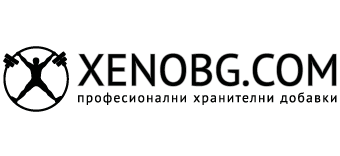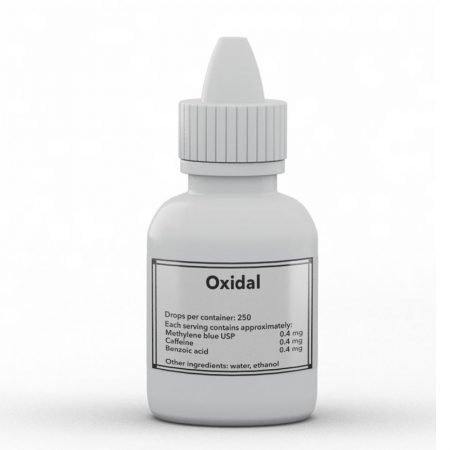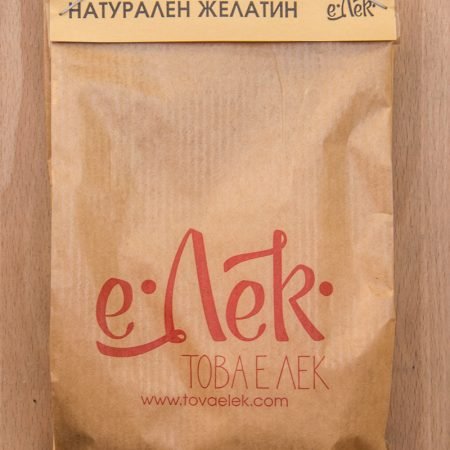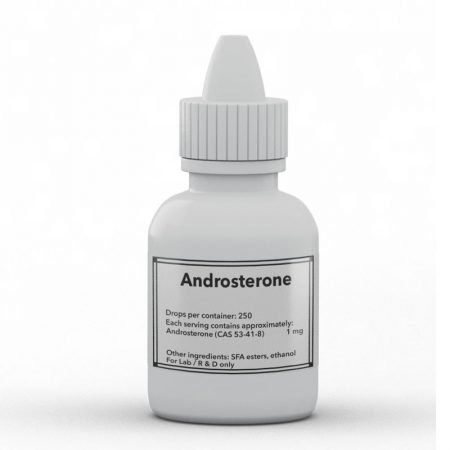Двойка интересни проучвания и коментар в авторитетното списание Journals of Gerontology. А именно, по-високият прием на холестерол е свързан с много по-голямо натрупване на чиста мускулна маса в резултат на вдигане на тежести. Интересно е, че по-високият прием на протеини не е такъв. Още по-интересно е, че за голямо съжаление на медицинската индустрия, повишеният холестерол в храната НЕ увеличава биомаркерите на ССЗ. Макар че проучването, установило тази връзка, не дава обяснение на механизма, коментарът в същото списание го прави. А именно, че наситените мазнини в храната увеличават андрогените – както чрез стимулиране на стеродогенните ензими (както съм обсъждал в други публикации), така и чрез увеличаване на нивата на холестерола. За разлика от тях, ПНМК (и в по-малка степен МНМК) намаляват синтеза и впоследствие кръвните нива на андрогени като Т, ДХТ, ДХЕА, андростендион и т.н. и дори на някои от техните прекурсори като прегненолон. Известният американски бодибилдър Винс Джиронда, чиято кариера започна преди ААС да бъдат широко достъпни, често казваше нещо от рода на „консумацията на 2-3 дузини яйца дневно има същия ефект като ААС“. Като се има предвид, че това е равносилно на прием на 5 g-7 g холестерол дневно, „железният гуру“ вероятно е бил прав в изказването си.
В по-зловещ план си спомням, че съм чел изследвания от първата половина на 20-ти век, в които се предлага пациенти с рак на простатата да бъдат подложени на диета с високо съдържание на ПНМК като форма на андрогенна депривационна терапия. В тези проучвания ясно се посочваше, че приемът на ПНМК е подобен на „химическата кастрация“, на която мъжете продължават да бъдат подлагани и днес като „лечение“ на рак на простатата. В коментара към статията за холестерола се споменава и за намаляващите тестостерона ефекти на ПНМК, което ме кара да мисля, че този кастрационен ефект на ПНМК е добре известен на медицинските специалисти. Във връзка с това последните две проучвания в тази статия са доста подходящи. Едно от проучванията установява, че богатите на ПНМК масла, широко използвани в хранителната верига, имат силен понижаващ ДХТ ефект. Другото проучване установи, че дори относително „доброкачествената“ олеинова киселина (MUFA) проявява силен естрогенен и антиандрогенен ефект върху потомството, когато се дава на майката в дози от 10 g-15 g дневно, което е съвсем в съответствие с това, на което повечето потребители на западната диета са изложени ежедневно.
В светлината на последните проучвания, показващи, че нивата на Т и броят на сперматозоидите на мъжете са спаднали през последните 2-3 десетилетия, може би епидемията от безплодие има много лесно обяснение – умишлена химическа кастрация на мъжете чрез тяхната храна, наситена с ПНМК (дори с МНМК).
https://academic.oup.com/biomedgerontology/article/62/10/1164/568431
“…The average dietary cholesterol consumption was strongly associated (r = 0.448, p =.001) with the change in lean mass, which was further strengthened by adjustments for body mass (r = 0.467, p =.001) and lean mass (r = 0.512, p <.001) (Figure 1A). Although dietary protein (g/kg lean mass/d) was significantly correlated with dietary cholesterol (r = 0.387, p =.004), protein was not significantly correlated with change in lean mass (r = −0.034, p =.802). Other dietary factors, kcal/kg lean mass/d, and mean kilocalories consumed per kilocalories of resting energy expenditure were not significantly correlated with the change in lean mass (18). Only dietary cholesterol entered a stepwise linear regression model (R2 = 0.27, p <.001), which evaluated the independent association of major dietary constituents to change in lean mass.”
“…The direct association between dietary cholesterol and changes in strength further supports the potential anabolic role of cholesterol. Moreover, the significant indirect association of HDL cholesterol with absolute strength both before and after training highlights the potential role of subfractions in the physiology of this response. Whereas the LDL subfraction delivers cholesterol to tissues and is strongly associated with muscle gain, the HDL subfraction delivers cholesterol away from tissues to be metabolized. Previous studies on cholesterol and muscle characteristics are quite limited; however, Kohl and colleagues (34) reported a strong inverse association, consistent with our findings, between HDL and 1 RM strength for chest and leg press (same as in the present report) in 5460 men.”
https://www.ncbi.nlm.nih.gov/pubmed/8942407
https://academic.oup.com/biomedgerontology/article/63/11/1260/759439
“…Riechman and colleagues (1) have published an excellent article in this Journal examining the relationship between dietary and serum cholesterol and the accrual of lean body mass with resistance exercise training. Omitted from this article, however, was a possible mechanism that I believe could assist in explaining their results. That is, the effects of dietary saturated fats and/or cholesterol on circulating androgen concentrations. A number of studies (2–5) have shown that reducing saturated fat in the diet, and/or replacing saturated fat with what are considered more healthy fats (polyunsaturated and/or monounsaturated fats), results in significant decline in the circulating testosterone concentration. With the well-known anabolic effects of androgens on skeletal muscle, this potentially could provide an additional link between saturated fats and/or cholesterol, resistance exercise, and lean body mass accrual. Further, if the authors have not already done so, and samples are available, I believe they should consider assessing circulating androgen concentrations and relating them to the amount of dietary cholesterol/saturated fat ingested, circulating cholesterol, and lean body mass accrual resulting from resistance exercise.”
https://europepmc.org/abstract/med/31449274
“…Anti-androgenic substances, mainly prostate 5α-reductase inhibitors, used in the treatment of benign prostatic hyperplasia (BPH) have been associated with side effects in man and animals. To reduce these side effects as well as suppress BPH development, the management of the condition has come to include dietary interventions. This study investigated the effect of some cooking oils on testosterone-induced hyperplasia of the prostate in rats. Male Sprague-dawley rats were distributed into eighteen groups (n=6) as A-R. A negative control group was injected subcutaneously with soya oil; while prostatic hyperplasia was induced subcutaneously in groups B-R with 3mg/kg testosterone daily for 14days. Group B was the positive control (BPH group) while groups C-R were also administered orally 800mg/kg of coconut, castor, canola, cottonseed, pomegranate, blackseed, sheabutter, olive oil, codliver, sardine, palm, repeatedly heated palm (RHPO), vegetable, repeatedly-heated vegetable (RHVO), sesame, and groundnut oils respectively, daily, for 14 days. Blood sample was drawn via retro-orbital sinus for the estimation of serum testosterone(T) and dihydrotestosterone (DHT) level and rats were thereafter euthanized to obtain the prostates for T and DHT determination as well as tissue weights. Data are mean ± SEM, compared by ANOVA. The oils significantly reduced the increase in prostate weight (PW) to body weight (BW) ratio induced by testosterone. Apart from the fact that all the oils reduced the PW:BW ratio, the blackseed, sheabutter, sardine, vegetable and groundnut oils suppressed the DHT level in the serum, while pomegranate, olive, RHPO reduced DHT level in the prostate compared to the BPH rats. This study suggests that blackseed, sheabutter, sardine, vegetable, groundnut, pomegranate, olive, and RHPO oils could inhibit testosterone-induced hyperplasia of the prostate and therefore may be beneficial in the management of BPH.”
https://www.endocrine-abstracts.org/ea/0044/ea0044P203
“…This study was designed to determine if prenatal exposure to oleic acid would alter testicular endocrine functions in either an estrogenic or antiandrogenic manner at puberty. Gravid dams were distributed into four groups of five rats each as follows: Control group (1 ml/kg olive oil throughout pregnancy), pre-treatment group (1000 mg/kg of oleic acid for 7 days before mating), preimplantation group (1000 mg/kg of oleic acid for the period of preimplantation), Organogenesis group (1000 mg/kg of oleic acid for the period of organogenesis). Dams delivered naturally and male offspring were studied into puberty. Morphological landmarks, hormone levels and sex accessory gland development were assessed. Estrogenic properties included shortened AGI, decrease in serum LH and T (P<0.001), increase in prolactin level in the organogenesis group. Antiandrogenic properties included delayed pubertal maturation, altered serum LH and T levels (P<0.001), epididymal sperm numbers in all treated groups. The results provide in vivo example of a pronounced degree of target tissue selectivity to an environmental endocrine-disruptor.”
Πηγή:
- Πόσα φρέσκα πορτοκάλια χρειάζεστε για να καθαρίσετε το συκώτι σας από το λίπος;Εάν έχετε λιπώδες συκώτι, η ενσωμάτωση φρέσκων πορτοκαλιών στη διατροφή σας μπορεί να βοηθήσει στην αποκατάσταση της υγείας του συκωτιού σας. Αυτό προκύπτει από μια μικρή ιταλική μελέτη. Ιταλοί βιοχημικοί που συνεργάζονται με το Εθνικό Ινστιτούτο Γαστρεντερολογίας, IRCCS Saverio de Bellis, στρατολόγησαν 62 άτομα με μεταβολική δυσλειτουργία που σχετίζεται με στεατοηπατική ηπατική νόσο… Διαβάστε περισσότερα: Колко пресни портокала са ви необходими, за да изчистите черния си дроб от мазнини?
- Το χρόνιο στρες μειώνει την ντοπαμίνη και προκαλεί ψυχικές ασθένειεςΤα στοιχεία για το ρόλο του χρόνιου στρες σε όλες σχεδόν τις παθήσεις της υγείας για τις οποίες οι γιατροί έχουν μια ονομασία συνεχίζουν να συσσωρεύονται. Δυστυχώς, ακόμη και σε αυτή την τελευταία μελέτη, οι επιστήμονες συνεχίζουν να επιμένουν ότι υπάρχει κάποια μυστηριώδης και μη μετρήσιμη διαφορά μεταξύ του χρόνιου στρες που „αυξάνει τον κίνδυνο“ και του στρες που „προκαλεί“ παθολογία. Ωστόσο, οι ίδιοι επιστήμονες δεν έχουν κανένα πρόβλημα να δηλώσουν… Διαβάστε περισσότερα: Хроничният стрес понижава допамина и причинява психични заболявания
- Τα οιστρογόνα και η κορτιζόλη, όχι τα ανδρογόνα, καταστέλλουν την ανοσίαΣτη βιολογία της αναπαραγωγής, υπάρχει μια πολύ διάσημη θεωρία που εξακολουθεί να θεωρείται κυρίαρχη στον τομέα αυτό. Δηλαδή, ότι οι άνδρες πρέπει να αποδέχονται την ισορροπία μεταξύ των επιπέδων ανδρογόνων και της ανοσίας. Είναι γνωστή ως η υπόθεση της βλάβης της ανοσολογικής ικανότητας (ICHH). Τα υψηλότερα επίπεδα ανδρογόνων, σύμφωνα με τη θεωρία, επιτρέπουν στον άνδρα να ν(σωματικά)… Διαβάστε περισσότερα: Естрогенът и кортизолът, а не андрогените, потискат имунитета
- Η αναστολή της αρωματάσης (για τη μείωση των οιστρογόνων) μπορεί να οδηγήσει στη θεραπεία του καρκίνου του στομάχου.Άλλη μια μελέτη που αποδεικνύει την αιτιώδη σχέση μεταξύ οιστρογόνων και καρκίνου, η οποία θεωρείται ορμονοανεξάρτητη. Ο καρκίνος του στομάχου είναι μία από τις κύριες αιτίες θανάτου από καρκίνο παγκοσμίως και ιδιαίτερα στις ασιατικές χώρες. Θεωρείται πολύ δύσκολο να αντιμετωπιστεί και οι περισσότεροι ασθενείς διαγιγνώσκονται σε στάδια όπου η χειρουργική επέμβαση δεν ενδείκνυται.… Διαβάστε περισσότερα: Инхибирането на ароматазата (за намаляване на естрогена) може да доведе до лечение на рак на стомаха.
- Η καταστολή της ανοσίας και όχι οι ιοί (HPV) μπορεί να είναι η αιτία του καρκίνου του δέρματοςΠρόσφατα έχω δημοσιεύσει διάφορα θέματα σχετικά με την ανοσοκαταστολή και τον καρκίνο. Ακολουθούν δύο από αυτά που δίνουν μια καλή επισκόπηση και συνδέουν τις ανοσοκατασταλτικές επιδράσεις των PBMCs, των οιστρογόνων και της κορτιζόλης με τις προστατευτικές επιδράσεις της βιταμίνης Α, Ε, D, της προγεστερόνης κ.λπ. https://xenobg.com/pnmk-sa-imunosupresivni-a-gladuvaneto-i-ogranichavaneto-na-proteinite-veroyatno-nanasyat-oshte-po-golyama-vreda/ https://xenobg.com/vitamin-d-mozhe-da-spre-rastezha-na-melanoma/ Παρά τις συσσωρευμένες αποδείξεις ότι είναι το καταπιεσμένο ανοσοποιητικό σύστημα που επιτρέπει στον καρκίνο να σχηματιστεί και να… Διαβάστε περισσότερα: Потиснатият имунитет, а не вирусите (HPV), може да е причина за рака на кожата
- Η βιταμίνη Κ μπορεί να θεραπεύσει τη λευχαιμίαΆλλη μια σπουδαία μελέτη που καταδεικνύει τόσο τις θεραπευτικές δυνατότητες των βιταμινών όσο και τη μεταβολική/οξειδοαναγωγική φύση του καρκίνου. Όπως ανέφερα σε κάποια από τα podcasts μου, η βιταμίνη Κ2 (MK-4) βρίσκεται επί του παρόντος σε κλινικές δοκιμές για τη θεραπεία/πρόληψη πολλών διαφορετικών καρκίνων, ειδικά του καρκίνου του ήπατος και των λεγόμενων μυελοδυσπλαστικών καταστάσεων, οι οποίες περιλαμβάνουν όλους τους καρκίνους.… Διαβάστε περισσότερα: Витамин К може да лекува левкемия
- Η βιταμίνη D μπορεί να σταματήσει την ανάπτυξη του μελανώματοςΜεγάλη μελέτη που επιβεβαιώνει την πρόσφατη ανάρτησή μου σχετικά με την αποφυγή του ηλιακού φωτός που είναι τόσο κακή για την υγεία σας όσο το κάπνισμα ενός πακέτου τσιγάρων την ημέρα. Εξάλλου, χωρίς το φως του ήλιου δεν θα υπάρξει μεγάλη σύνθεση βιταμίνης D, και η συμπληρωματική πρόσληψη δεν είναι αποτελεσματική για πολλούς ανθρώπους λόγω διαφόρων παραγόντων, συμπεριλαμβανομένης της περίσσειας… Διαβάστε περισσότερα: Витамин D може да спре растежа на меланома
- Η αυξημένη σύνθεση λιπαρών οξέων (FAS) είναι απλώς ένα σημάδι ανεπάρκειας οξυγόνου/χαμηλού μεταβολισμού.Μια σύντομη ανάρτηση σχετικά με μια μελέτη που παρέχει πληροφορίες για το πώς η αυξημένη οξείδωση των λιπαρών οξέων μπορεί „παραδόξως“ να οδηγήσει σε αυξημένη σύνθεση λιπαρών οξέων, οδηγώντας έτσι στον φαύλο κύκλο που παρατηρείται συνήθως στον διαβήτη και τον καρκίνο. Μια από τις πρόσφατες αναρτήσεις μου συζήτησε μια πολύ πιο πρόσφατη μελέτη,… Διαβάστε περισσότερα: Повишеният синтез на мастни киселини (FAS) е просто признак за недостиг на кислород / нисък метаболизъм
- Τα ΜΣΑΦ είναι ανοσοκατασταλτικά και η νηστεία και ο περιορισμός των πρωτεϊνών (πιθανώς) κάνουν ακόμη μεγαλύτερη ζημιά.Όπως ανέφερα σε ένα από τα πρώτα podcast με τον Danny Rodi, ο ρόλος των PBMCs ως ανοσοκατασταλτικών παραγόντων είναι στην πραγματικότητα πολύ γνωστός στη βιομηχανία μεταμοσχεύσεων οργάνων. Κάποια στιγμή στη δεκαετία του 1980, υπήρχε ακόμη και ένα εμπορικό προϊόν βασισμένο σε PBMCs που πωλούνταν στα νοσοκομεία ως μέρος ενός λεγόμενου „ολικού παρεντερικού… Διαβάστε περισσότερα: ПНМК са имуносупресивни, а гладуването и ограничаването на протеините (вероятно) нанасят още по-голяма вреда
- Οι άνθρωποι έχουν μια ικανότητα σαν της σαλαμάνδρας να επιδιορθώνουν τους χόνδρουςΟ τίτλος μιλάει από μόνος του, αλλά οι συγγραφείς της μελέτης καταλήγουν στο ατυχές και ατυχές συμπέρασμα ότι ενώ μπορούμε να επιδιορθώσουμε τους χόνδρους, δεν μπορούμε να επιδιορθώσουμε τα άκρα μας. Λοιπόν, οι πολυάριθμες μελέτες σε ζώα που δημοσίευσα στο προηγούμενο κομμάτι διαφωνούν με αυτό και δείχνουν τόσο τον υψηλό μεταβολισμό όσο και την προγεστερόνη ως ισχυρά αναγεννητικά… Διαβάστε περισσότερα: Хората имат подобна на саламандър способност да възстановяват хрущяли










